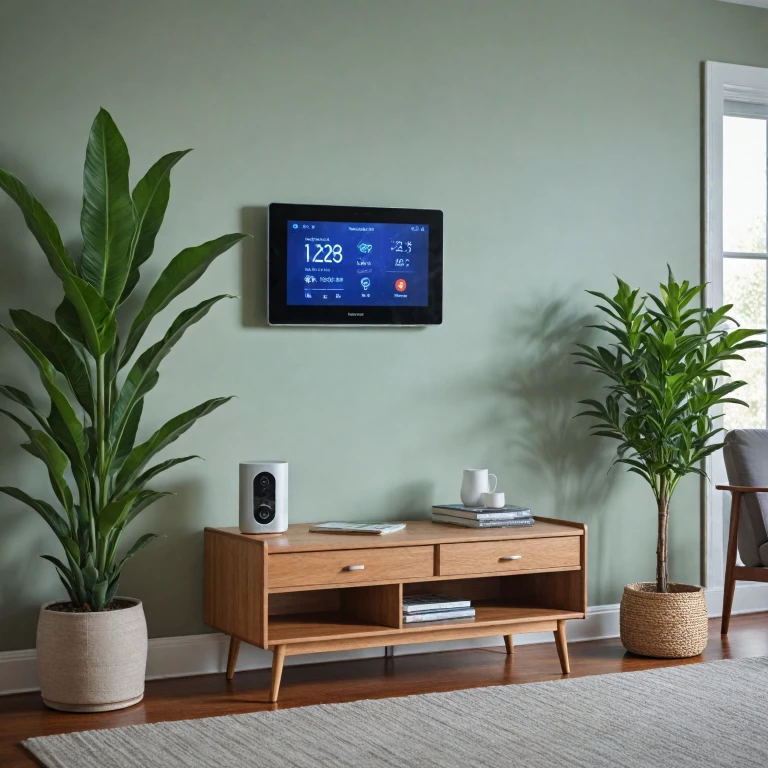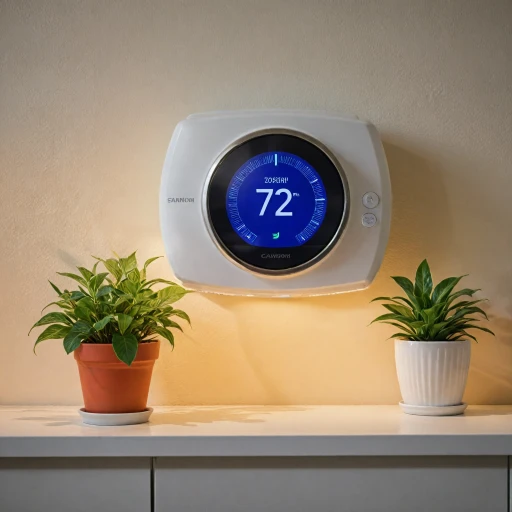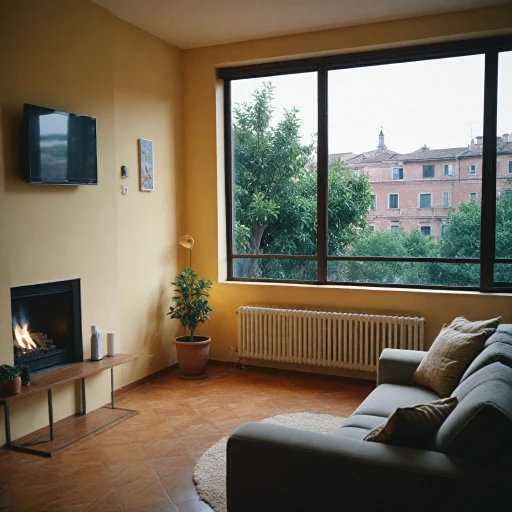Understanding Z-Wave Technology
The Basics of Z-Wave Technology
Z-Wave technology is a wireless communication protocol that enables smart devices to communicate with each other effortlessly within a home automation system. Unlike more common wireless protocols like Wi-Fi and Bluetooth, Z-Wave is specifically designed for the low-power short-range environment that many smart home devices operate in. This makes it ideal for smart thermostats, where energy efficiency and reliable connections are paramount.How Z-Wave Works Behind the Scenes
The Z-Wave network operates primarily on a low-frequency band, allowing it to avoid common interference issues frequently encountered by Wi-Fi reliant devices. Z-Wave devices create a mesh network, where each device or "node" can communicate directly with others, extending the range beyond what a single unit can handle. This collaboration among devices makes Z-Wave networks robust and expansive, supporting everything from smart thermostats to smart switches and smart lights.Advantages Over Other Protocols
One of the notable advantages Z-Wave holds over other protocols like Zigbee is its broader interoperability among devices from different manufacturers. With the support of the Z-Wave Alliance, it ensures that all certified products, including smart hubs and door locks, play nicely together, giving users a wider range of compatible devices to control. Unlike Zigbee, which requires the whole network to operate within close proximity, Z-Wave’s mesh capabilities make it easier to create a seamless smart home ecosystem. When you consider adding a smart thermostat to your Z-Wave hub, you open up opportunities for enhanced control and efficiency, like optimizing comfort with smart thermostats for baseboard heating. This technology allows setting up integrations with Amazon Echo, Google Nest Hub, or even controlling the power consumption of other smart devices connected to the network. Turning your attention to more future-oriented aspects, Z-Wave continues to evolve with new updates, promising extended capabilities and easier integration into smart home systems. As you embark on creating your smart home environment, understanding Z-Wave basics gives you a solid foundation to build on, enhancing energy efficiency and control across devices within your smart ecosystem.Why a Z-Wave Hub is Essential for Smart Thermostats
Crucial Role of a Z-Wave Hub in Your Smart Home
Integrating a Z-Wave hub into your smart home setup is essential for maximizing the potential of your smart thermostat. This hub acts as the central control point for your network of smart devices, including lights, door locks, and sensors, streamlining communication and automation among them. Here’s why using a Z-Wave hub specifically for your smart thermostat has significant benefits:- Seamless Connectivity: The Z-Wave hub enables your smart thermostat to communicate effortlessly with other Z-Wave compatible devices within the range of your network. This seamless connectivity is crucial for automating energy efficiency and convenience features, such as adjusting your Nest Hub or Amazon Echo based on your location or preferred settings.
- Enhanced Control and Monitoring: With the integration of a Z-Wave hub, you can manage your smart thermostat through various apps, offering remote control capabilities that include adjusting temperature settings and monitoring energy consumption from anywhere. This centralized control enables users to optimize power consumption effectively.
- Interoperability with Multiple Devices: The Z-Wave Alliance ensures a wide range of devices, including smart lights and door locks, are compatible, paving the way for cohesive smart home ecosystems. This interoperability among Z-Wave devices enriches user experience through streamlined automation and control.
- Scalability and Flexibility: Investing in a Z-Wave hub gives you the flexibility to add more smart devices as needed without major configuration headaches. Whether it’s an Aeotec smart switch or a series of Z-Wave sensors, everything can be integrated smoothly.
Enhancing home comfort with smart thermostats
Setting Up Your Z-Wave Hub with a Smart Thermostat
Seamlessly Connecting Your Smart Thermostat
Setting up your Z-Wave hub with a smart thermostat can be a straightforward process if you follow the right steps. A Z-Wave hub acts as a central control point, allowing you to manage various smart devices, including your thermostat, from a single app. This integration not only enhances convenience but also improves the efficiency of your smart home ecosystem.
Steps to Get Started
- Choose the Right Hub: Begin by selecting a Z-Wave hub that is compatible with your smart thermostat. Popular choices include the Aeotec Smart Hub and the Nest Hub, which work well with a range of smart devices.
- Install the Hub: Follow the manufacturer's instructions to install your hub. Typically, this involves connecting it to your home network and downloading the associated app.
- Connect Your Thermostat: Use the app to add your smart thermostat to the hub. Ensure that both devices are within the Z-Wave range for optimal connectivity.
- Configure Settings: Once connected, configure the thermostat settings through the app. You can control temperature, set schedules, and even monitor power consumption.
Enhancing Your Smart Home Experience
Integrating a Z-Wave hub not only simplifies the management of your smart thermostat but also enhances your overall smart home experience. With the ability to control smart lights, door locks, and other compatible wave devices, a Z-Wave hub offers comprehensive control over your home's environment. For those looking to further enhance home comfort, exploring the role of an attic fan with thermostat can provide additional benefits.
Enhancing Energy Efficiency with a Z-Wave Hub
Maximizing Energy Savings and Comfort
A Z-Wave hub can significantly enhance the energy efficiency of your smart thermostat by offering advanced control over your heating and cooling systems. By seamlessly connecting and communicating with various smart devices, Z-Wave hubs enable homeowners to achieve optimal energy management across their living spaces.
One of the key elements is the ability to schedule your thermostat based on your daily routine, allowing for precise temperature control. Utilizing the hub's app, you can easily set your desired temperatures for different times of the day, ensuring that energy is not wasted when no one is home.
The integration of smart sensors further enhances this capability. These sensors communicate with the thermostat via the Z-Wave network, providing real-time data on temperature fluctuations throughout your house. Consequently, the thermostat can make automatic adjustments to maintain a comfortable environment while reducing power consumption.
Moreover, Z-Wave hubs are compatible with various brands, including Google Nest and Aeotec Smart devices, ensuring that your existing or future smart gadgets can work in harmony. The wide compatibility range facilitates the incorporation of smart hubs, lights, switches, and even door locks, contributing to an interconnected smart home ecosystem.
For added convenience, Z-Wave hubs uniquely accommodate other wireless protocols, such as Zigbee, expanding their versatility in smart home automation. This flexibility makes Z-Wave hubs a wise investment for those aiming to enhance both energy efficiency and user-friendly control in their homes.
Troubleshooting Common Issues with Z-Wave Hubs
Addressing Issues That May Arise
When working with Z-Wave hubs and smart thermostats, there can occasionally be hiccups or common challenges. Many issues stem from connectivity errors, app compatibility, and misunderstanding of device settings.- Connectivity Challenges: It's not uncommon to experience connectivity issues between various smart devices. These can often be resolved by checking the Z-Wave network range and ensuring the hub and connected devices are within it. If you have power devices or walls blocking the signal, repositioning the hub or adding Z-Wave repeaters might help in strengthening the signal.
- App Compatibility and Smart Hubs: Ensuring that your thermostat's app is compatible with your smart hub systems, such as a Nest Hub or Google Home, can eliminate many control issues. Some smart hubs, like Aeotec Smart or zigbee alternatives, may require specific apps for full compatibility.
- Device Reset and Firmware Updates: Sometimes a simple device reset can solve unexpected behavior. Keeping device firmware up-to-date is crucial for maintaining compatibility and functionality. Many smart devices, such as smart lights or smart switches, frequently release updates to improve performance.
Future Trends in Z-Wave and Smart Thermostat Integration
Looking Ahead: The Integration of Z-Wave and Smart Thermostat
The future of Z-Wave technology in smart thermostats promises enhanced connectivity and seamless integration with a broader ecosystem of smart devices. As the Z-Wave Alliance continues to innovate, we anticipate several trends that will shape how smart homes function.- Interoperability and Compatibility: The trend towards greater interoperability of devices, including door locks, smart lights, and sensors, means that smart hubs are becoming central hubs for home automation. Many manufacturers, like those producing aeotec smart switches, are focusing on compatible wave devices that can seamlessly work together.
- Expanded Device Networks: As the need for energy efficiency and cost-saving measures grows, Z-Wave hubs are expected to support an ever-expanding range of wave devices. This will allow users to not only control smart lights and thermostats but also manage their entire household from a consolidated app.
- Emphasis on Energy Efficiency: Continued advancements will likely see Z-Wave hubs integrating with other technologies, like Zigbee wave, to optimize power consumption. This cooperation will be vital in reducing energy usage, with smart thermostats playing a critical role.
- Voice and AI Integration: With smart hubs like Google Nest Hub and Amazon Echo taking the lead, the integration of voice control and AI functionalities will become more sophisticated. Users will benefit from more intuitive temperature control through simple voice commands.
- Cost-Effective Solutions: Innovations may make Z-Wave technology more accessible, reducing prices and making best smart home solutions available to a wider audience, while maintaining high standards of security and performance.









